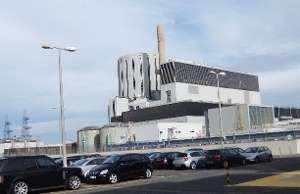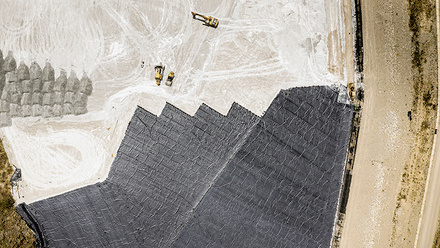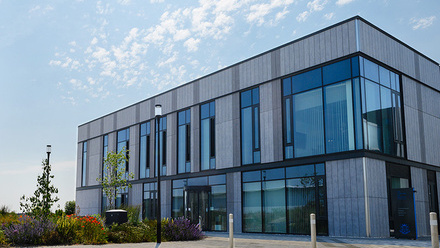Fred Starr recollects: Traitors to the cause?
Fred Starr FIMMM explores Britain’s journey with nuclear power.

A rough and ready way of guessing the age of a materials buff, is to ask what they think of nuclear power. If it’s positive, they are usually over 65. This thought came to me on reading Golden Egg or Poisoned Chalice, the story of atomic energy in Britain by Tony Wooldridge and Stephen Druce. Their ages and careers put them into the pro-nuclear age group, but, despite this, the book is as good and objective account of the history, as you will find.
My, admittedly, juvenile interests in nuclear affairs began as an ardent protagonist for Britain’s gas cooled reactor programme. What we had was much more forward looking than the pressurised water and boiling water reactors being pushed by the USA.
Temperature wise, these are limited by the thermodynamic properties of water, and, metallurgically, by the zirconium clad fuel pins. There was, and still is, no possibility of improvements in efficiency. Conversely, gas cooled reactors could evolve. Each new concept running hotter and hotter. But once I became a professional metallurgist, it was the materials problems that first made me begin to question nuclear, although it provided thousands of well-paid jobs for my contemporaries.
The man behind the nuclear programme
One of the best chapters in the book is based on the unpublished memoirs of Sir Christopher Hinton. These reside in the Churchill Archives at Cambridge University. Who was Sir Christopher? He was the driving force behind the facilities to produce the U235 and plutonium for Britain’s A bombs.
Part of this effort was the initially, hugely successful, Windscale Pile. An air-cooled arrangement that was, in a sense, the basis for Britain’s gas cooled reactors. As a schoolkid, I came to know of it through the ‘Windscale Disaster’, whereby radioactive dust was spread over Cumbria. This was the world’s first nuclear incident, where, true to form, the government was hell bent on assuring the country that ‘it really didn’t matter’ and, if it did, ‘Britain could take it’. Heard that one recently?
The Windscale reactor had caught fire, due to uprating it in an effort to produce tritium, a vital component in the design of the H Bomb. Something Britain just had to have. Operating temperatures had to be raised. Hinton, seeing the risks, left the project. It was not the only time that materials, in this case the aluminium fuel pins, which contained a magnesium-lithium alloy, had been pushed too far by the nuclear fraternity.
Magnox and breakaway oxidation
Hinton’s other notable achievement was to get the world’s first nuclear reactor – Calder Hall – operating in time for its official opening in 1956. A graphite-moderated design, using CO₂ cooling, it was the forerunner of all of Britain’s gas cooled reactor concepts. Given that Calder Hall was the only nuclear reactor brought in on schedule, Hinton was just the man to head the Central Electricity Generating Board (CEGB), which was about to embark on a massive Magnox programme. One of Hinton’s concerns was that, technically, these designs were well beyond what had been done at Calder Hall.
He was right, but it took several years of operation for the phenomenon of breakaway oxidation to reveal itself. Operating temperatures on all units had to be dropped, and a vast amount of experimental work was needed to develop a ‘breakaway equation’. I used to highlight this in my paper on the Engineering Science of High Temperature Corrosion, emphasising that the equation involved temperature, CO2 pressure, silicon content of the steel and gas moisture content.
Hinton and the gas cooled reactors
The advanced gas cooled reactors (AGRs), which followed on from Magnox, ran even hotter, therefore needing better steels, but breakaway was still a threat. New equations were required, but at these higher temperatures, the graphite moderator in the reactors was also susceptible to high-temperature attack – so called radiolytic oxidation, not the normal type.
That wasn’t the only problem with graphite. Neutron bombardment distorted its lattice, necessitating ingenious ways of assembling the graphite bricks and keeping the moderator as cool as possible. Nevertheless, after 40 years of operation, the graphite bricks in the AGRs are cracking, which will mean that all of these reactors will be shut down by 2030.
It seems that Hinton was turning against gas cooled reactors, perhaps distressed by their potential complexity, leaving the CEGB even before the first AGRs were ordered. If he had stayed around, it seems improbable that we would have been in the mess that Dungeness B, our first AGR, got us into. According to Wooldridge and Druce, it was noteworthy for the contract being signed without a clear idea of what was to be built! The only consolation we have is that because of the 17 years it took to construct, Dungeness B will be with us until 2029. Just two governments’ worth of time to further screw up ‘UK Energy Planning’.







